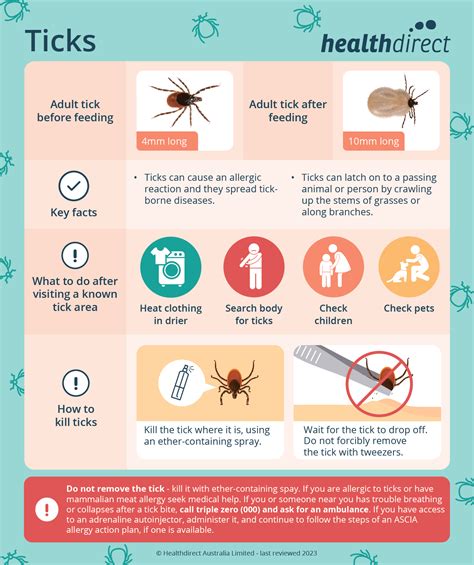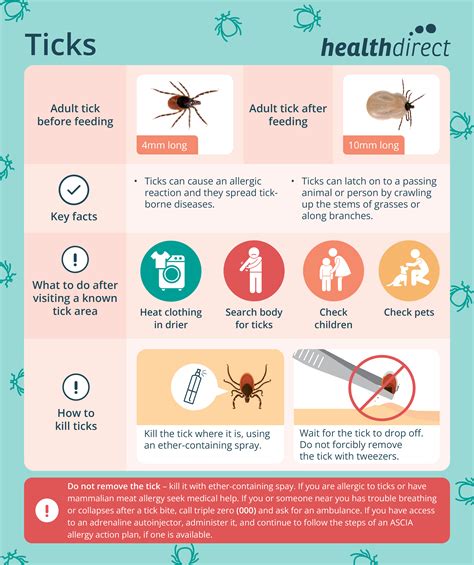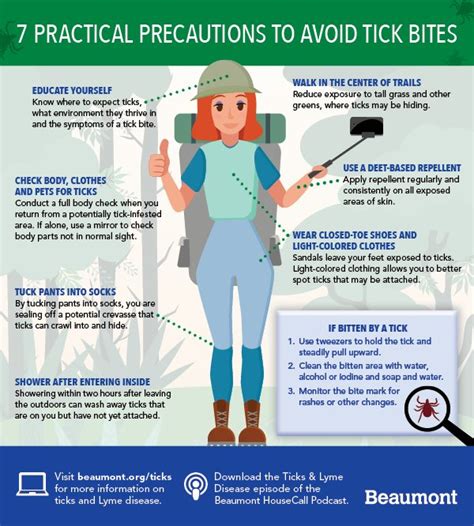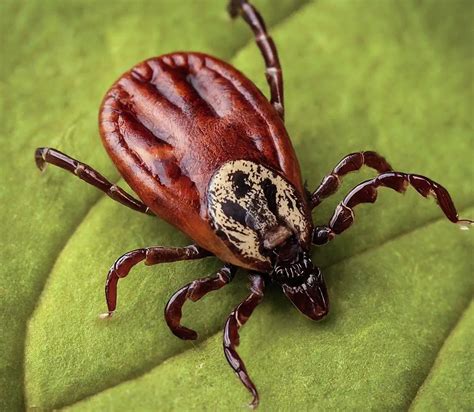Intro
Discover if tick bites itch and learn about tick bite symptoms, removal, and treatment to prevent Lyme disease and other tick-borne illnesses, including rash and fever.
Tick bites can be a source of significant discomfort and anxiety for many individuals, particularly during the warmer months when these tiny arachnids are most active. One of the most common concerns associated with tick bites is the itching sensation that often follows. But do tick bites always itch, and what are the implications of an itchy tick bite? Understanding the relationship between tick bites and itching is crucial for managing symptoms and preventing potential complications.
The experience of a tick bite can vary greatly from person to person. While some individuals may not notice any symptoms at all, others might experience a range of reactions, including redness, swelling, and, notably, itching. The itchiness associated with tick bites is primarily a result of the body's immune response to the tick's saliva, which contains compounds designed to prevent the host from detecting the tick's presence. These compounds can trigger an allergic reaction, manifesting as itchiness, redness, and swelling around the bite area.
It's also worth noting that not all tick bites result in itching. The severity and type of reaction can depend on several factors, including the species of tick, the individual's immune response, and whether the tick is infected with any pathogens. For instance, bites from the Lone Star tick have been associated with a condition known as alpha-gal syndrome, which can lead to an allergy to red meat and, in some cases, cause itching among other symptoms. However, this is more of an exception than the rule, and most tick bites, even if they itch, do not lead to such severe allergies.
Understanding Tick Bites

To better grasp the phenomenon of tick bites and their potential to itch, it's essential to understand the biology of ticks and their feeding behavior. Ticks are ectoparasites that feed on the blood of mammals, birds, and sometimes reptiles and amphibians. During their feeding process, they inject saliva into the host, which, as mentioned, can cause an immune response. This response is what leads to the itching sensation, among other symptoms. There are hundreds of tick species, and each can have slightly different effects on the host. However, the general principle of an immune response to tick saliva applies across the board.
Types of Ticks and Their Bites
Different species of ticks can cause varying levels of discomfort and itching. For example, the black-legged tick (Ixodes scapularis), known for transmitting Lyme disease, may cause a distinctive "bull's-eye" rash that can be itchy in some cases. On the other hand, the American dog tick (Dermacentor variabilis) can cause a more generalized rash and intense itching. Understanding which tick species are prevalent in your area and the typical reactions they cause can help in managing tick bites more effectively.Symptoms of Tick Bites

The symptoms of a tick bite can vary, but common reactions include:
- A small, red bump at the site of the bite
- Redness and swelling that can spread from the bite site
- Itching or burning sensation
- Blistering (less common)
- A rash, which can be a sign of infection or an allergic reaction
It's crucial to monitor the bite area for signs of infection, such as increased redness, swelling, or pus, and to seek medical attention if these symptoms occur. While itching is a common symptom, it's essential to avoid scratching the area to prevent breaking the skin, which could lead to infection.
Treating Itchy Tick Bites
Treating itchy tick bites involves relieving the itching sensation and monitoring for any signs of infection or disease transmission. Here are some steps you can take: - Apply calamine lotion or hydrocortisone cream to reduce itching and inflammation. - Use antihistamines for more severe itching. - Apply a cold compress or an ice pack to reduce swelling. - Keep the bite area clean with soap and water. - Avoid scratching to prevent infection.Preventing Tick Bites

Prevention is key when it comes to tick bites. Here are some effective strategies to minimize the risk of tick encounters:
- Wear protective clothing: Long-sleeved shirts, long pants, and closed-toe shoes can prevent ticks from reaching your skin.
- Use insect repellents: Apply repellents containing DEET, picaridin, or oil of lemon eucalyptus to exposed skin and clothing.
- Conduct regular tick checks: After spending time outdoors, especially in wooded or grassy areas, inspect your body for ticks.
- Stay on trails: When hiking, try to stay in the center of trails to avoid brushing against vegetation where ticks might be present.
- Use tick repellents on gear: Treat clothing, backpacks, and other gear with products containing permethrin.
Removing Ticks
If you find a tick attached to your skin, it's essential to remove it correctly to minimize the risk of disease transmission. Here's how: - Use fine-tipped tweezers to grasp the tick as close to your skin as possible. - Pull upward with steady, even pressure. Do not twist or jerk the tick, which can cause mouthparts to break off and remain in the skin. - Continue to pull upward until the tick is removed completely. - Clean the bite area with soap and water. - Dispose of the tick by placing it in alcohol, sealing it in a bag, or flushing it down the toilet.Diseases Transmitted by Ticks

Ticks can transmit a variety of diseases to humans, including Lyme disease, Rocky Mountain spotted fever, and anaplasmosis, among others. The risk of disease transmission increases the longer the tick is attached, which is why prompt removal is crucial. Symptoms of tick-borne illnesses can vary but often include fever, headache, and a rash. If you experience any of these symptoms after a tick bite, seek medical attention.
Long-Term Effects of Tick Bites
While most tick bites resolve without long-term effects, some tick-borne diseases can lead to chronic conditions if left untreated. For example, untreated Lyme disease can lead to arthritis, neurological problems, and heart issues. It's essential to seek medical care if you suspect you've been bitten by a tick and are experiencing symptoms of a tick-borne illness.Conclusion and Next Steps

In conclusion, tick bites can indeed itch, and understanding the reasons behind this itching, as well as how to manage and prevent tick bites, is crucial for enjoying the outdoors while minimizing health risks. By being aware of the types of ticks, their habitats, and the diseases they can transmit, individuals can take proactive steps to protect themselves. Remember, prevention and early detection are key to avoiding the potential complications associated with tick bites.
If you've found this information helpful, consider sharing it with friends and family who enjoy outdoor activities. Your feedback and comments are also welcome, as they help in creating more informative and engaging content. Together, we can promote awareness and safety measures against tick bites and the diseases they can transmit.
What are the common symptoms of a tick bite?
+Common symptoms include a small, red bump, redness and swelling, itching or burning sensation, and in some cases, blistering or a rash.
How can I prevent tick bites?
+Prevention strategies include wearing protective clothing, using insect repellents, conducting regular tick checks, staying on trails, and using tick repellents on gear.
What diseases can ticks transmit to humans?
+Ticks can transmit a variety of diseases, including Lyme disease, Rocky Mountain spotted fever, and anaplasmosis. Prompt removal of attached ticks and seeking medical care if symptoms occur are crucial.
